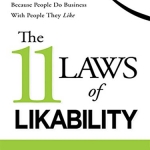The 4 Things Your Resume – and Your Blog Page – Should Include
“There are many different opinions on what information you should and shouldn’t include on your resume. But there are certain basics that must be there,” Zip Recruiter advises in an article reprinted in the Indianapolis Star. “Here’s the good news.” The authors say: “You already have all the answers.”
As a content marketing professional, I found this Zip Recruiter advice highly relevant. What’s so interesting is that, while there are articles galore about what elements should be included in a blog post, there’s relatively little guidance on basic pieces of information that need to appear on a blog page.
Forbes offers a list of 8 must-haves for the blog post content itself:
- magnetic headline
- compelling lead-in
- useful subheads
- informative body
- appealing graphics
- powerful call to action
- relevant internal link
- good meta description
However (and this is the eye-opening aspect of the Zip recruiter piece), as blog marketers, we’re missing the boat if certain key information isn’t right there, in the same visual field as our wonderful content, quickly accessible to our blog readers:
Contact information
“Include your name along with the proper pronunciation if you find that others have trouble with it,” Zip Recruiter advises. Include the phone number you use most, and your email address. (Sure, your website has an “About” page, but what if a blog visitor is moved to act now?)
Work experience
Your blog is a way to assert your authority as a SME (Subject Matter Expert). You’ve successful dealt with – many times before – the problem with which the reader is dealing now. You’ve got this!
Education
Do business blog readers need to know about educational credentials of a practitioner or business owner? You bet. Today’s consumers won’t do business with someone they don’t trust, and “credentializing” is one way to build trust. Degrees and certifications may be listed or shown as logos, and educational experiences can be woven into blog content itself.
Skills
Demonstrating not only what you know but what you know how to do is a crucial function of any business blog. Specific services offered may be listed on the blog page itself (in addition to offering case studies, testimonials, and descriptions as part of the blog content.
The Zip Recruiter article serves as a reminder to us content writers and the business owners who hire us: The visitors you hope to attract to your website may not be in search of a job, but the same four types of information that belong on a resume belong on your blog page!






Follow us online!